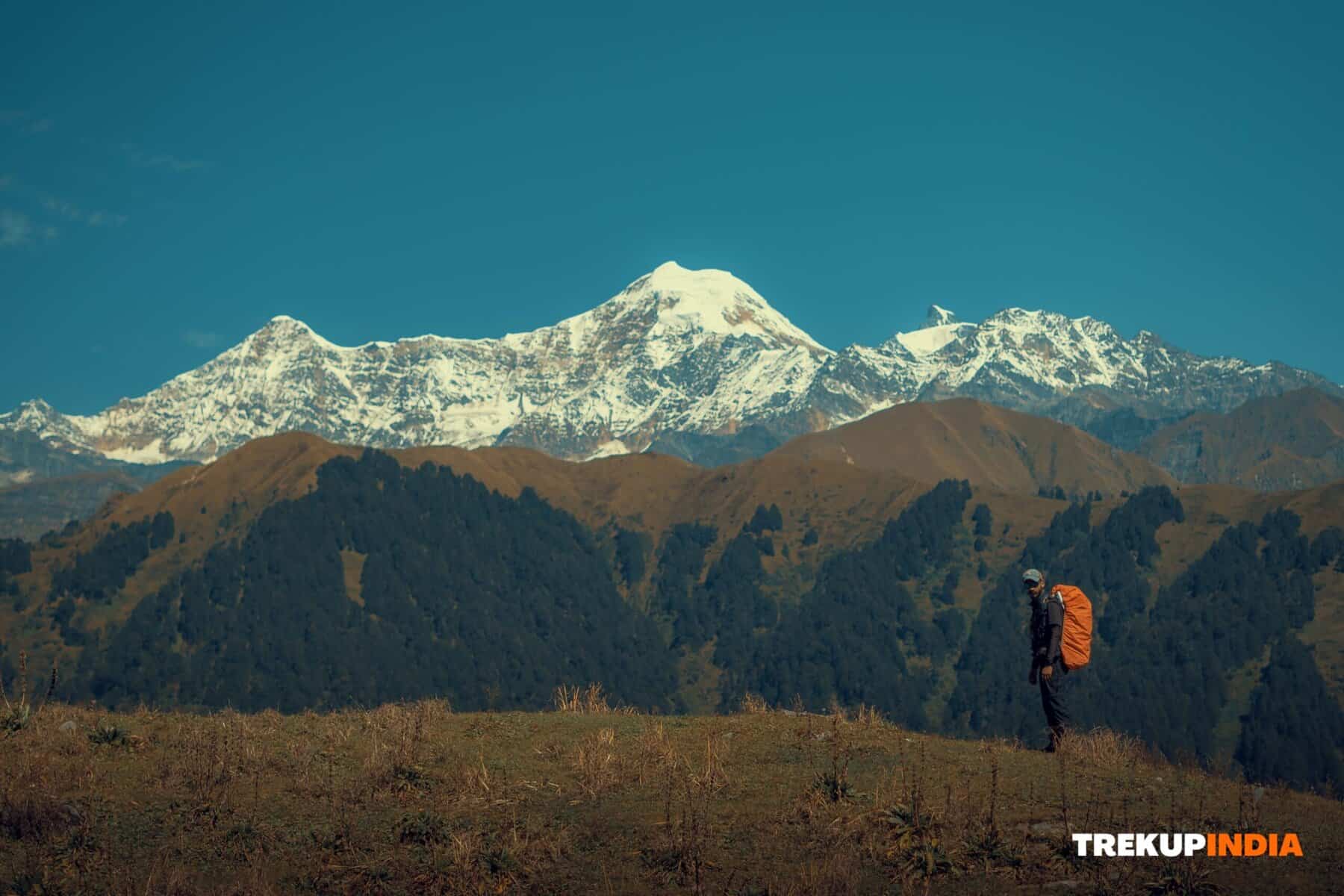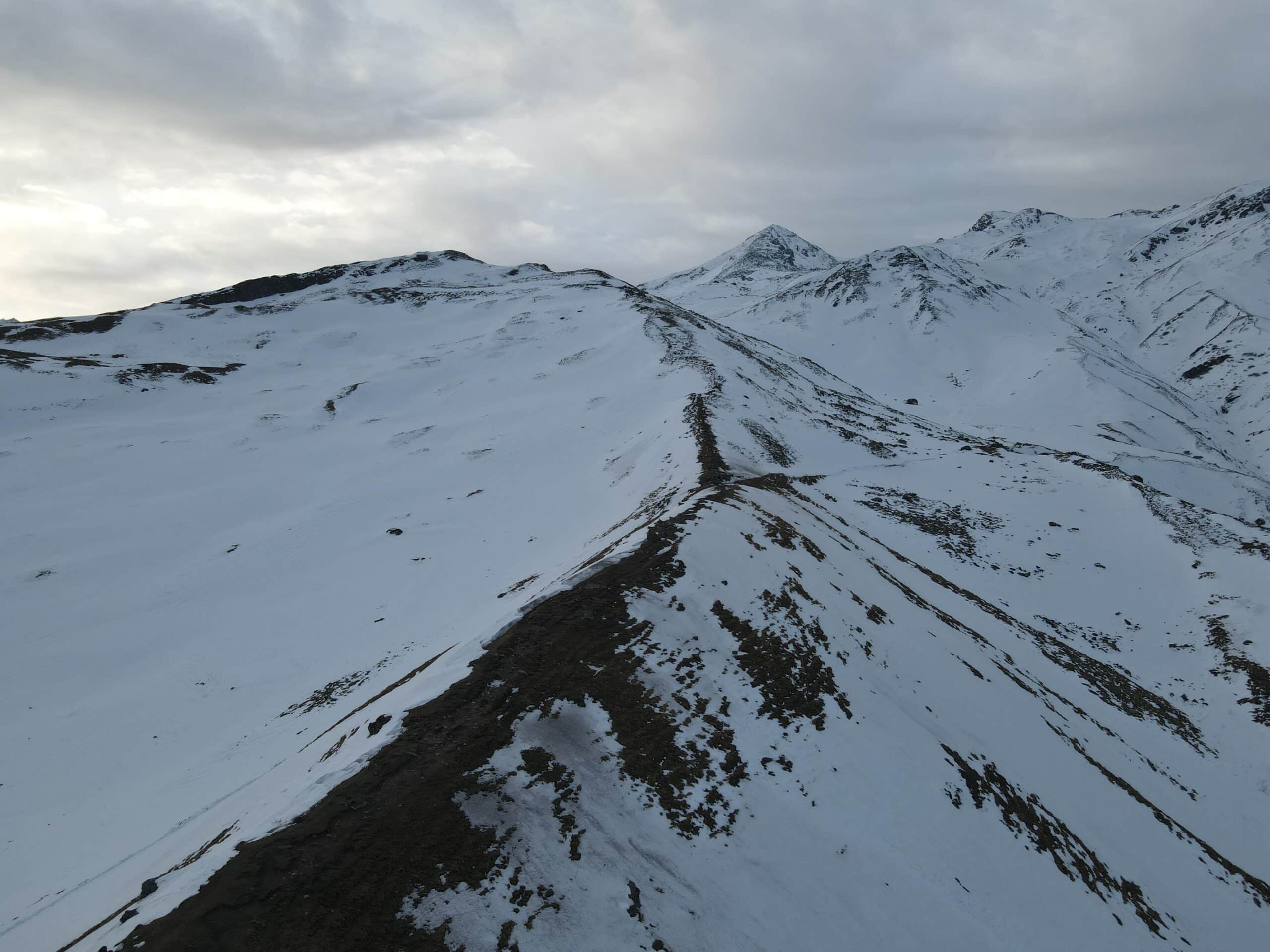Expert advice on pre-trek exercises and activities to enhance your readiness for Himalayan treks
Being a Mountain Expert in Trekup India, I guide you on preparing yourself and practising some exercises and activities for the trek, which I implement in my daily routine lifestyle. Most people think running, and some Hrs of Cardio are enough to prepare for the trek, but practically, this is not enough; one should systematically plan a workout routine. Walking in the Himalayan Mountains differs from Running in a plan region.
Start your workout routine as per the weekly chart mentioned below, which we have designed by fitness experts, assuming you have 30 days left for your trek: –
Easy Level Trek (30 Days before trek)
Target 5 km in 45 minutes
Days | Activities | Duration |
Day 1 | Walk | 40 min |
Body Stretching | 20 – 25 min | |
Day 2 | Breathing Exercise | 15 – 20 min |
Walk | 50 min | |
Body Stretching | 20 – 25 min | |
Day 3 | Breathing Exercise | 15 – 20 min |
Walk | 55 min | |
Body Stretching | 20 – 25 min | |
Day 4 | Breathing Exercise | 20 – 25 min |
Jogging | 1 hr | |
Body Stretching | 30 – 35 min | |
Day 5 | Breathing Exercise | 20 – 25 min |
Jogging | 1 hr | |
Body Stretching | 30 – 35 min | |
Day 6 | Breathing Exercise | 20 – 25 min |
Jogging | 1 hr | |
Body Stretching | 35 – 40 min | |
Day 7 | Breathing Exercise | 20 – 25 min |
Rest | – |
On Day 1
Day 01st Try to walk for 40 minutes at least; this will prepare your body for further routine. It builds good strength and endurance,
Body Strech for 20-25mins – While on a trek, injuries can occur like strain cramps, so with proper stretching, one can avoid such common injuries; trek stretching will increase the mobility of the joint
Perform Breathing Exercises as your cool-down exercise after doing Walking and Body Stretching. This breathing exercise will increase the lung capacity so one can easily acclimatise at a high altitude. At sea level, we have sufficient oxygen for our bodies, but as the altitude increases, the oxygen saturation decreases. With proper breathing techniques, our body will quickly acclimatise.
On Day 02nd and Day 03rd
Now, Every day, gradually try to increase your Workout routine by walking for 55min to 1 hour
Body Stretching exercise 20-25 mins.
On Day 04th, Day 05th and Day 06th
After day 03, we shited ourselves from Walking to Jogging; this will keep your lungs and heart healthy and increase your stamina. Start Jogging for 01 hours slowly, and then increase your speed.
The next step is to stretch the body for 30-35 mins.
Breathing exercises for 20-25 mins.
On Day 07
Day 07 is your rest day; after sweating for 06 days now, your body needs some recovery on the 7th day; this will rejuvenate your body for next week’s workout routine.
Nothing better than a trek can make you trek-fit. Go for a hike whenever and wherever you get a chance. If you don’t have an option nearby, try using stair climbing with a little weight will be more beneficial.
Physical exercise plays an important role; on the other hand, a proper diet plays an important role in your lifestyle. If you are not eating enough fibre, carbs, protein, vitamins, etc., your whole workout will not give you that result. Make sure you don’t skip any Breakfast, Lunch and Dinner. Eat fresh, clean and healthy as much as you can. Add fruits, dry fruits, lentils, eggs, fish ( If you are Non-Veg), soybean, milk & panner or peanut butter to your diet.
Make Sure to keep yourself hydrated & drink an ample amount of water daily ( 7-8 Glasses )
Pro Tip - Exercise with backpack
A backpack is an important trekking accessory containing snacks, liquids, clothing and other useful items. Practice walking and running with your backpack to get used to carrying weight and position while on the go.
Trekking not only Improves your Physical fitness but also plays an important role in keeping your mental health healthy. It prevents your anxiety, Reduces symptoms of ADHD ( Attention-deficit/hyperactivity disorder ), etc.
Conclusion
In conclusion, trekking is the best practice to boost your physical and mental health if you work daily and eat healthily. Following the routine mentioned above will enhance your trekking experience so that you can easily complete your trek without any challenging tasks.
Share this article
Want To Trek Like Pro?
Check out the following videos if you want to trek like a pro trekker and improve your skills. These videos contain helpful tips, tricks, and techniques to help you trek like a pro. Whether you’re a beginner or an experienced trekker, these videos can provide valuable insights to enhance your trekking experience. So, watch the videos below by Trekup India experts to take your trekking skills to the next level.







Know Everything About Acute Mountain Sickness
Acute Mountain Sickness is a medical condition that can occur when individuals travel to high altitudes, typically above 8,000 feet. It is caused by the decrease in air pressure and oxygen levels in the air as altitude increases. Symptoms of Acute Mountain Sickness may include headache, nausea, vomiting, dizziness, and difficulty sleeping. To avoid Acute Mountain Sickness, it is important to gradually adjust to high altitudes and seek medical attention if symptoms worsen. To learn more about this condition, check out the videos by Trekup India.



Important Guidelines
Special Casual Leave (SCL) for Government Employees
Government employees joining our trekking expeditions can avail of Special Casual Leave (SCL) under the following conditions:
- Eligibility Criteria:
- SCL is available exclusively to Indian government employees.
- Applicable only for treks conducted within India.
- Leave Details:
- As per Pay Commission rules, government employees are entitled to up to 30 days of SCL in a calendar year for trekking or mountaineering expeditions.
- Treks must be organized by a registered organization, such as Trekup India, recognized by the Indian Mountaineering Foundation (IMF).
- Application Process:
- You need to apply for leave at least 20 days before the trek departure date.
- How to Apply: The following details are required to apply for IMF certification through the IMF.
- Email info@trekupindia.com with the following details:
- Your booked trek date.
- The trek name.
- Aadhar Card
- Designation
- Office Address
- Additional Fee of Rs. 250/ per person will be applicable.
- Note: It might take 20-25 days to receive a certificate from the IMF, subject to their approval.
- Email info@trekupindia.com with the following details:
- Documentation Support:
- Trekup India will provide the necessary documents to facilitate your SCL application.
Age-Based Requirements for Junior Trekkers
- A parent or guardian must accompany trekkers below 15 years of age.
- Trekkers Aged 15 to 18 or above Years: Can trek solo but require a Disclaimer Form signed by a parent or guardian. And Medical Form that Provides health details and confirms fitness for trekking by MBBS Doctor
- Trekkers Aged above 18 Years: Require a Disclaimer Form self-signed. And Medical Form that Provides health details and confirms fitness for trekking, Signed with an MBBS Doctor stamp.
Medical Fitness Required for Trek
If you’re planning a trek, you must ensure that your health parameters meet the fitness requirements for physical exertion at high altitudes or rugged terrains. Below are guidelines for each of the parameters mentioned:
1. Pulse Rate (Heart Rate at Rest):
- Normal: 60 to 100 (bpm) beats per minute.
- Required Fitness: Physically fit person may have a resting heart rate closer to 50 bpm, which shows that he have good cardiovascular efficiency.
2. Blood Pressure (BP):
- Required BP: 120/80 mmHg. A Bolood Pressure within this Range ensures adequate oxygen delivery to muscles and organs during physical exertion, especially at high altitudes.
- Your specified blood pressure (BP) Range—Systolic: 100–140 mmHg and Diastolic: 70–90 mmHg—is appropriate and generally considered safe for trekking activities.
- Acceptable Range: <140/90 mmHg for trekking. Elevated BP could increase risks during strenuous activity or at high altitudes.
Recommendations:
- Pre-Trek Checkup: Monitor your BP multiple times & ensure that it should be normal.
- Stay Hydrated: Dehydration affect BP, so maintain proper fluid intake during your trek.
- Avoid Alcohol & Excess Salt: These can destabilize BP, especially at altitude.
- BP Monitor: If you have a history of BP issues, regularly check your BP during the trek. Our Trek Leaders are equipped with a BP machine.
3. Respiratory Rate at Rest:
- Required Rate: 12–20 breaths per minute.
4. Diabetes Mellitus:
- Acceptable: Well-controlled blood sugar levels (HbA1c <7% or fasting blood glucose <126 mg/dL).
- Fitness Requirement: Carry quick glucose sources and monitor regularly during the trek.
5. Bronchial Asthma:
- Acceptable: Only when your doctors allow it & you have to submit an MBBS doctor NOC that you can undergo this trek.
- Fitness Requirement: Bring prescribed inhalers/medications and consult your doctor about high-altitude risks.
6. Heart Problems:
- Acceptable: Individuals without recent cardiac events (e.g., heart attack within the past 2 years).
- Fitness Requirement: Clearance from an MBBS Doctor (cardiologist) is required.
7. Hypertension:
- Acceptable: Controlled hypertension (BP <140/90 mmHg) with no recent complications like hypertensive crisis.
8. Pacemaker Implant:
- Generally not recommended for high-altitude treks.
9. Body Mass Index (BMI):
- Required BMI: 18 – 26 kg/m² for a good trekking fitness.
- Overweight or underweight individuals may face additional strain on joints or fatigue.
Additional Recommendations:
- High Altitude Acclimatization: For treks above 10,000 feet, ensure have some acclimatization Trekup India have designed Itinary of this trek accordingly to it but its not granted that this itinary works fine with acclimatization. For more information, click here.
- Fitness Level: Regular aerobic and strength training exercises before the trek are essential. For more information, click here.
- Medical Clearance: Consult a healthcare professional (MBBS Doctor) to assess your suitability before coming on this trek.
Would you like assistance preparing for your trek or calculating specific health metrics? Call Your Trek Co-Ordinator






